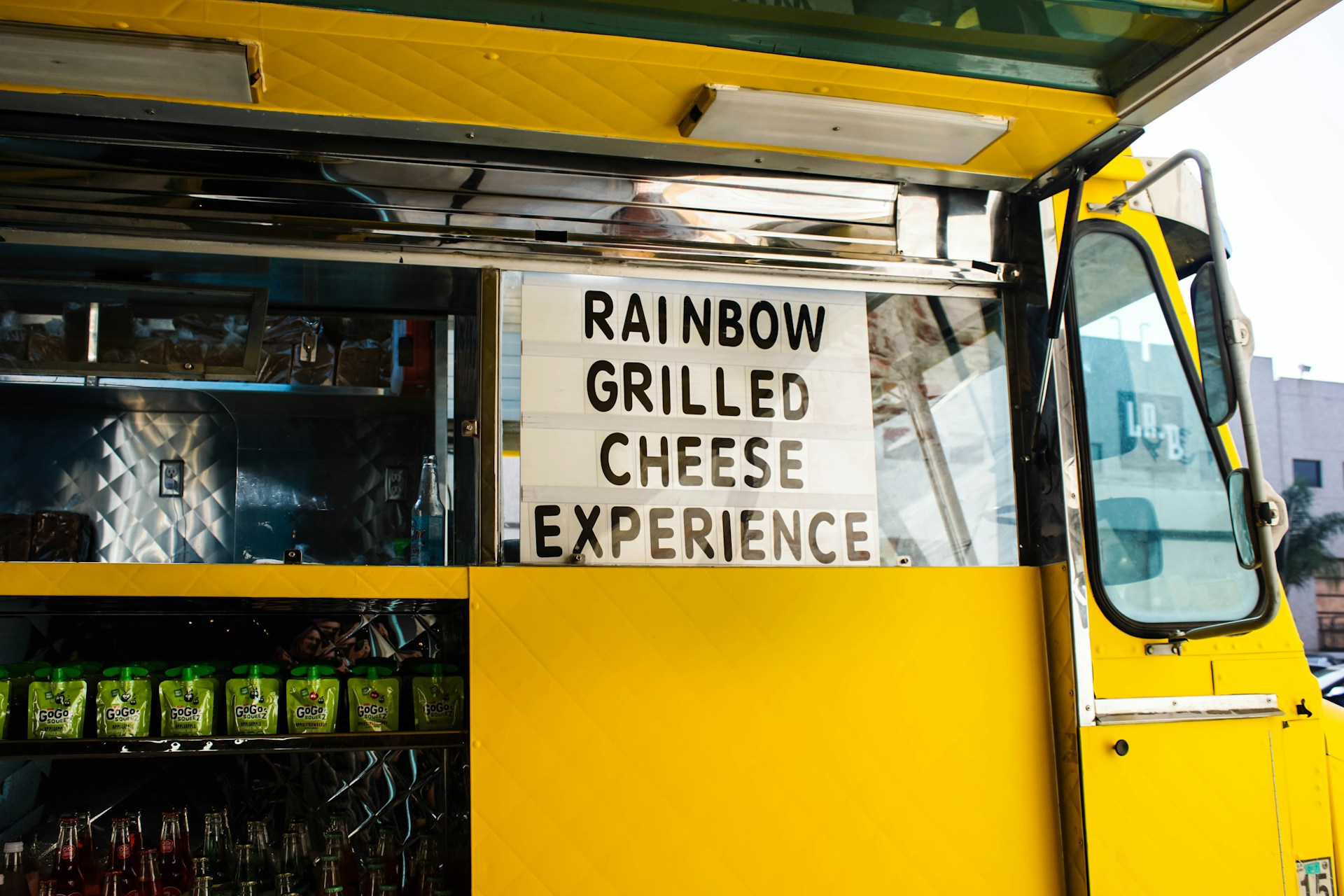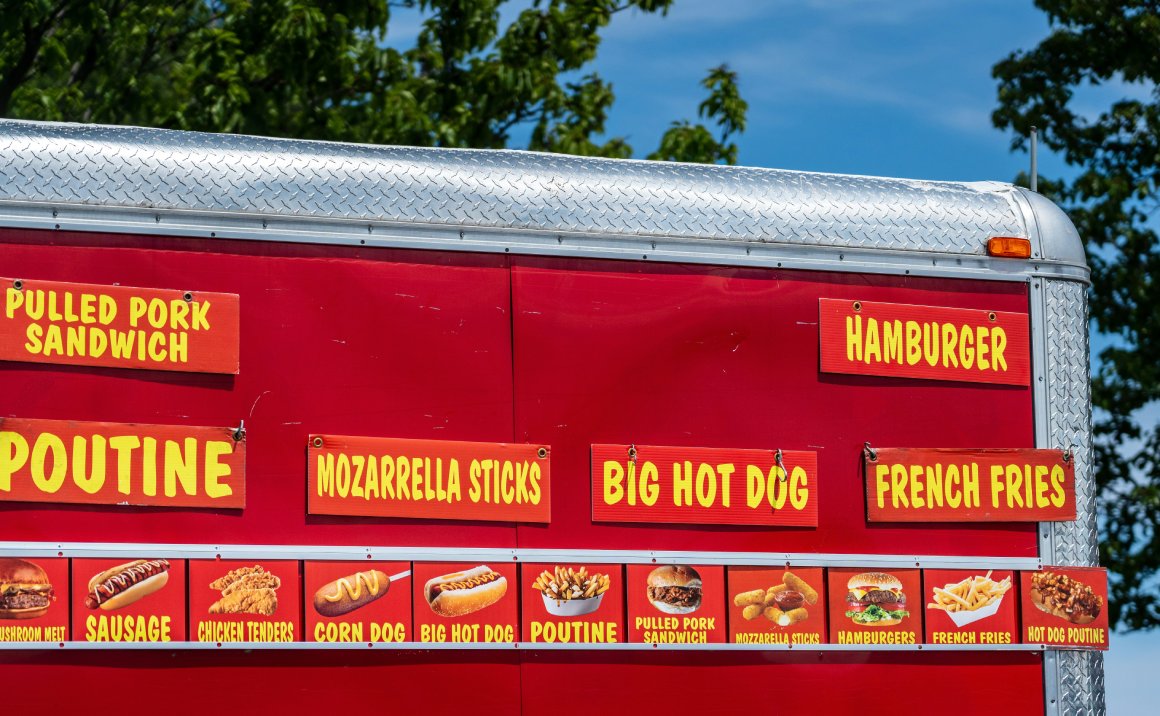
Scaling Up: How to Optimize Your Food Truck Operations as Your Business Grows
This post is part of a regular series. Click here to start at the beginning.
As your food truck gains popularity, you’ll likely experience a surge in customer demand. While this is a great problem to have, it also means you need to ensure that your operations are optimized to handle higher volumes without compromising on quality or service. As your food truck grows, keeping things running smoothly is essential to maintaining customer satisfaction and ensuring long-term success.
In this post, we’ll cover strategies to help you optimize your food truck operations, streamline processes, and maintain efficiency even as demand increases. By focusing on key areas like staffing, equipment, and technology, you can prepare your business for sustainable growth while keeping customers happy.
1. Refine Your Workflow for Faster Service
A well-organized workflow is essential for maintaining efficiency as demand increases. From prepping ingredients to fulfilling orders, every step of the process should be designed to minimize delays and maximize productivity. Optimizing your workflow can help you handle larger crowds without sacrificing speed or quality.
How to Implement This Tip:
- Reorganize Your Kitchen Layout: Your food truck’s kitchen layout plays a huge role in how quickly your team can work. Arrange equipment and prep stations in a way that minimizes unnecessary movement and allows staff to work more efficiently.
Example: A sandwich truck rearranges its kitchen so that the grill, prep station, and order window are closer together. This reduces the time it takes to assemble sandwiches and deliver them to customers, speeding up the entire process. - Designate Specific Roles for Staff Members: If you have a team, assign each staff member a specific role to streamline operations. This could include someone dedicated to taking orders, another to cooking, and someone else to assembling and packing orders. Defined roles reduce confusion and improve speed.
Example: A taco truck assigns one staff member to take orders and manage the register, while another handles cooking the tacos. This allows both team members to focus on their specific tasks without stepping on each other’s toes, ensuring a steady flow of orders. - Batch-Prep Ingredients in Advance: Prepping ingredients in batches during slower times can help reduce the workload during peak hours. By having ingredients ready to go, your team can focus on assembling orders rather than cutting or cooking food in the middle of a rush.
Example: A smoothie truck preps fresh fruit and other ingredients in the morning, allowing the team to blend smoothies quickly during the busy lunch rush. This preparation reduces wait times and ensures that the truck can handle a high volume of orders.
Expected Results:
- Faster Order Fulfillment: A more efficient workflow allows your team to complete orders quickly, reducing customer wait times and increasing the number of orders you can handle in a given time.
- Improved Team Coordination: Designating specific roles helps your team work together seamlessly, preventing bottlenecks and improving overall service efficiency.
- Measurable Impact: Track average order times before and after reorganizing your workflow to measure improvements in service speed and customer satisfaction.
2. Upgrade Equipment to Meet Higher Demand
As your food truck grows, your equipment needs to keep pace with the increased demand. Investing in high-efficiency or commercial-grade equipment can help you handle larger volumes of orders without overloading your kitchen.
How to Implement This Tip:
- Invest in High-Efficiency Cooking Equipment: If your current equipment isn’t keeping up with demand, consider upgrading to more powerful appliances. High-efficiency grills, fryers, or ovens can cook food faster and help you serve more customers in less time.
Example: A burger truck invests in a larger, high-efficiency grill that can cook more patties at once. This allows the team to prepare multiple orders simultaneously during peak hours, reducing wait times and preventing backlogs. - Add Specialized Equipment: Depending on your menu, adding specialized equipment can help speed up specific tasks. For example, a panini press, high-speed blender, or deep fryer can streamline prep work for certain dishes, making your kitchen more efficient.
Example: A coffee truck adds a second espresso machine to its setup, allowing the team to prepare multiple drinks at once. This cuts down on wait times and ensures that customers can get their coffee quickly, even during busy mornings. - Upgrade Refrigeration or Storage Units: Keeping ingredients fresh and readily available is crucial for maintaining quality during high-demand periods. Investing in larger refrigeration units or more efficient storage systems can help you keep up with increased inventory needs.
Example: A seafood truck upgrades to a larger refrigeration unit, ensuring they can store enough fresh ingredients to meet the demand for their signature dishes without running out during busy lunch hours.
Expected Results:
- Increased Production Capacity: Upgrading equipment allows you to prepare more food in less time, increasing the number of orders you can handle during busy periods.
- Improved Consistency and Quality: Commercial-grade equipment ensures that your food is cooked evenly and consistently, even when you’re working quickly to meet demand.
- Measurable Impact: Compare the number of orders you can fulfill before and after upgrading equipment to measure improvements in production capacity and service speed.
3. Implement Technology Solutions for Better Management
Incorporating technology into your food truck’s operations can streamline order processing, inventory management, and even customer engagement. From modern point-of-sale (POS) systems to digital ordering platforms, technology can help you operate more efficiently and keep up with increased demand.
How to Implement This Tip:
- Use a Modern POS System: A reliable POS system is essential for processing orders quickly and accurately. Look for a system that offers mobile payments, integrates with online ordering platforms, and provides detailed sales analytics.
Example: A taco truck switches to a cloud-based POS system that allows customers to pay using mobile wallets like Apple Pay or Google Pay. The system also tracks sales and inventory in real time, helping the owner make data-driven decisions about menu items and promotions. - Offer Online Ordering and Pre-Orders: Allowing customers to place orders online or through an app can reduce wait times at your truck and improve the overall customer experience. Online ordering also helps you manage high volumes of orders during busy times.
Example: A pizza truck introduces an online ordering system that allows customers to place their orders ahead of time and pick them up at a designated time. This reduces the rush at the order window and ensures that customers get their food quickly. - Automate Inventory Management: Keeping track of inventory can be a challenge when you’re dealing with higher demand. Using inventory management software to track ingredient levels and generate automatic restocking alerts can help ensure that you always have the necessary supplies on hand.
Example: A smoothie truck uses an inventory management app that automatically tracks how much of each ingredient is used and sends alerts when it’s time to restock. This prevents the truck from running out of key ingredients during peak hours.
Expected Results:
- Reduced Order Errors: A modern POS system ensures that orders are processed accurately and quickly, reducing the risk of mistakes and improving customer satisfaction.
- Increased Customer Convenience: Offering online ordering and pre-order options makes it easier for customers to get their food, leading to higher customer satisfaction and repeat business.
- Measurable Impact: Track sales data, order processing times, and inventory usage before and after implementing technology solutions to measure improvements in efficiency and customer satisfaction.
4. Build a Strong Team to Support Growth
As demand increases, having a well-trained, reliable team is essential for maintaining smooth operations. Expanding your staff and ensuring that everyone is well-equipped to handle the workload will help you manage high volumes of customers while maintaining quality and service.
How to Implement This Tip:
- Hire Additional Staff for Key Roles: If your food truck is consistently busy, it may be time to hire more team members to help with specific tasks. Adding staff for roles like cashier, prep cook, or line cook can help you keep up with demand and prevent service delays.
Example: A BBQ truck hires an additional cook to help with food prep during peak hours, ensuring that the team can serve more customers without slowing down service. - Cross-Train Employees for Flexibility: Cross-training your staff allows team members to switch roles as needed, giving you more flexibility to handle busy times. This can be especially useful when one area of your truck is overwhelmed, and another is less busy.
Example: A coffee truck cross-trains its cashier to help with drink preparation during slower times, and trains its barista to handle orders when the line gets too long. This flexibility keeps the truck running smoothly, even during rush periods. - Create a Positive Team Culture: Building a strong team culture can help reduce turnover and ensure that your staff is motivated to provide great service. Encourage open communication, provide clear training, and offer opportunities for growth.
Example: A sandwich truck holds regular team meetings to discuss performance, share feedback, and celebrate successes. This helps create a positive work environment, keeping staff engaged and motivated to handle the demands of a growing business.
Expected Results:
- Improved Efficiency: A well-staffed team ensures that orders are completed quickly and accurately, even when demand is high.
- Reduced Burnout: Hiring additional staff and cross-training employees helps prevent burnout, allowing your team to handle busy periods without becoming overwhelmed.
- Measurable Impact: Track service times and customer feedback to assess how additional staff and improved training impact efficiency and customer satisfaction.
Conclusion: Scaling Your Food Truck Business With Efficiency
Growing your food truck business is an exciting challenge, but it requires careful planning and optimization to ensure that increased demand doesn’t compromise your service or quality. By refining your workflow, investing in the right equipment, incorporating technology, and building a strong, adaptable team, you can handle higher volumes of customers while maintaining efficiency and keeping your operations running smoothly.
As your food truck gains popularity, it’s important to continuously assess and adjust your processes to meet growing demand. Remember that the key to success lies in staying flexible, anticipating growth, and making strategic investments in your business. With the right approach, you’ll not only meet the challenges of growth but also set the stage for long-term success and a loyal customer base.
Stay tuned for our next post, where we’ll cover essential strategies for marketing your food truck’s grand opening and creating buzz that keeps customers coming back for more!
This post is part of a regular series. Please use these links to view the rest of the series in order.
Toast – A Specialized Payment Solution for Food Trucks
Is Toast the Right Payment Processing System for Your Food Truck? When it comes to…
Licenses, Permits, and Documentation Needed to Open Your Food Truck
How to Get Your Food Truck Legally Ready for Business: Licenses, Permits, and Documentation Starting…
How to Manage Food Waste – Effective Menu Planning
Menu Planning to Minimize Food Waste: A Chef’s Guide to Streamlining Your Food Truck’s Offerings…




